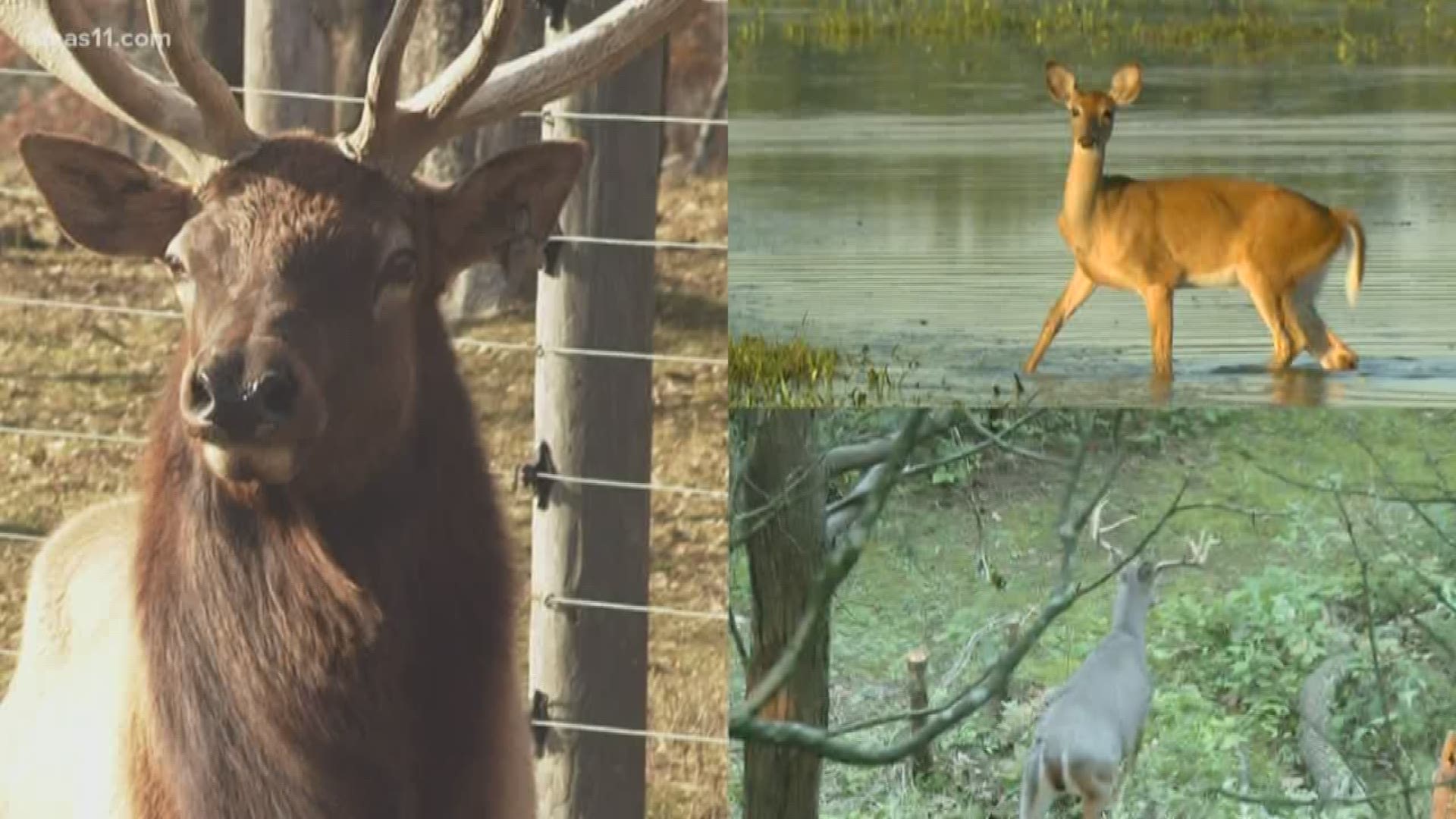FRANKFORT, Ky. — Kentucky borders seven states.
Of those seven, six of them have been exposed to a highly contagious and always deadly disease which has decimated their deer population.
For Kentucky, the threat targets not only our healthy deer herd, but also our prized elk herd.
Chronic Wasting Disease, or CWD, attacks the brain of deer, elk, moose and caribou, causing them to drool, stumble, and become extremely thin. Basically they waste away.
The Kentucky Department of Fish and Wildlife Resources (KDFWR) is desperately trying to keep CWD at bay.
“Past 10, 15 years we’ve sampled over 30,000 animals,” State Wildlife Veterinarian Dr. Christine Casey said. “Nothing so far.”
Considering the fact that so many states around us are CWD states, Dr. Casey admitted that it could be just a matter of time that it infects the Commonwealth as well.
“Our current closest one is 59 miles, and that’s in Tennessee," Dr. Casey said.
She has been dissecting deer heads to remove parts of the brain as well as the lymph nodes to send off for testing for CWD.
Extracting samples for the state also happens at C&J Deer Processing and Taxidermy in Louisville.
“We’ve been pulling samples for probably five or six years for them,” owner Joe Long said.
There’s plenty to take samples from because the hunting has been good, keeping the business busy.
“We’re probably looking at 1800, 1900 deer this year,” Long projected.
HUNTING OUT OF STATE
Because of CWD, hunters hunting out of state are not allowed to bring their deer, elk, moose or caribou back in for processing.
According to state law, hunters can now only bring back the following:
- Meat – bone in or de-boned
- Antlers
- Antlers that are attached to a clean skull plate
- A clean skull
- Finished taxidermy product
- The hide
Hunters are also not allowed to bring in cervid carcasses or carcass parts without the spinal column and head removed and left behind.
The reason for the precautions?
Scientists have determined that an infected carcass with the bones, after it decomposes and dissolves into the ground, causes new vegetation in that spot to sprout with CWD in it.
There a grazing deer or elk can catch it.
The Fish and Wildlife Commission is now considering even more restrictions, including out of state meat being completely deboned.
The most common way for CWD to spread is through saliva and urine.
There’s plenty of that around salt licks and wherever else deer are baited which is legal in Kentucky.
“If and when we find CWD, that will be one of the first things that we do is no longer allow baiting, no longer allow artificial mineral licks,” Gabe Jenkins, the KDFWR Deer and Elk Program Coordinator, said.
There are no plans to prohibit that before the disease even gets here.
IS INFECTED MEAT SAFE TO EAT?
They jury is still out on that.
Dr. Casey warned, “If you’re traveling out of state to do hunting and you’re in a state that’s CWD positive, you should be getting your meat tested.”
The CDC points out that the research suggests there could be a risk to people eating infected meat.
According to the agency, studies on non-human primates, such as monkeys, can be harmed by eating meat from CWD-infected animals.
“There is some evidence that non-human primates, which are very similar to us, can get it,” Dr. Casey said.
Do you have a story you want our Focus team to investigate? Send an email to Focus@whas11.com.
More on deer disease:

